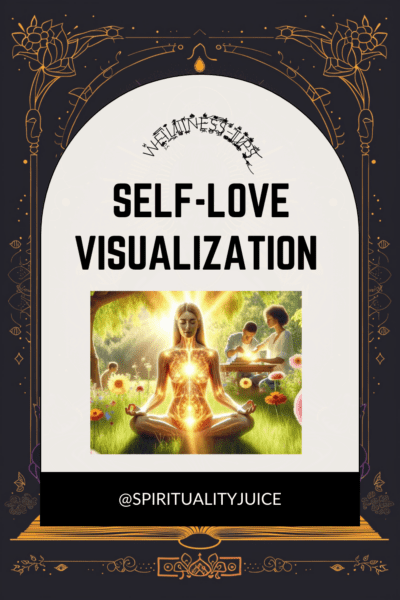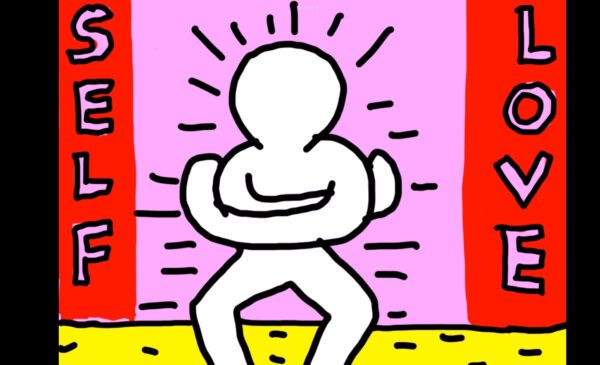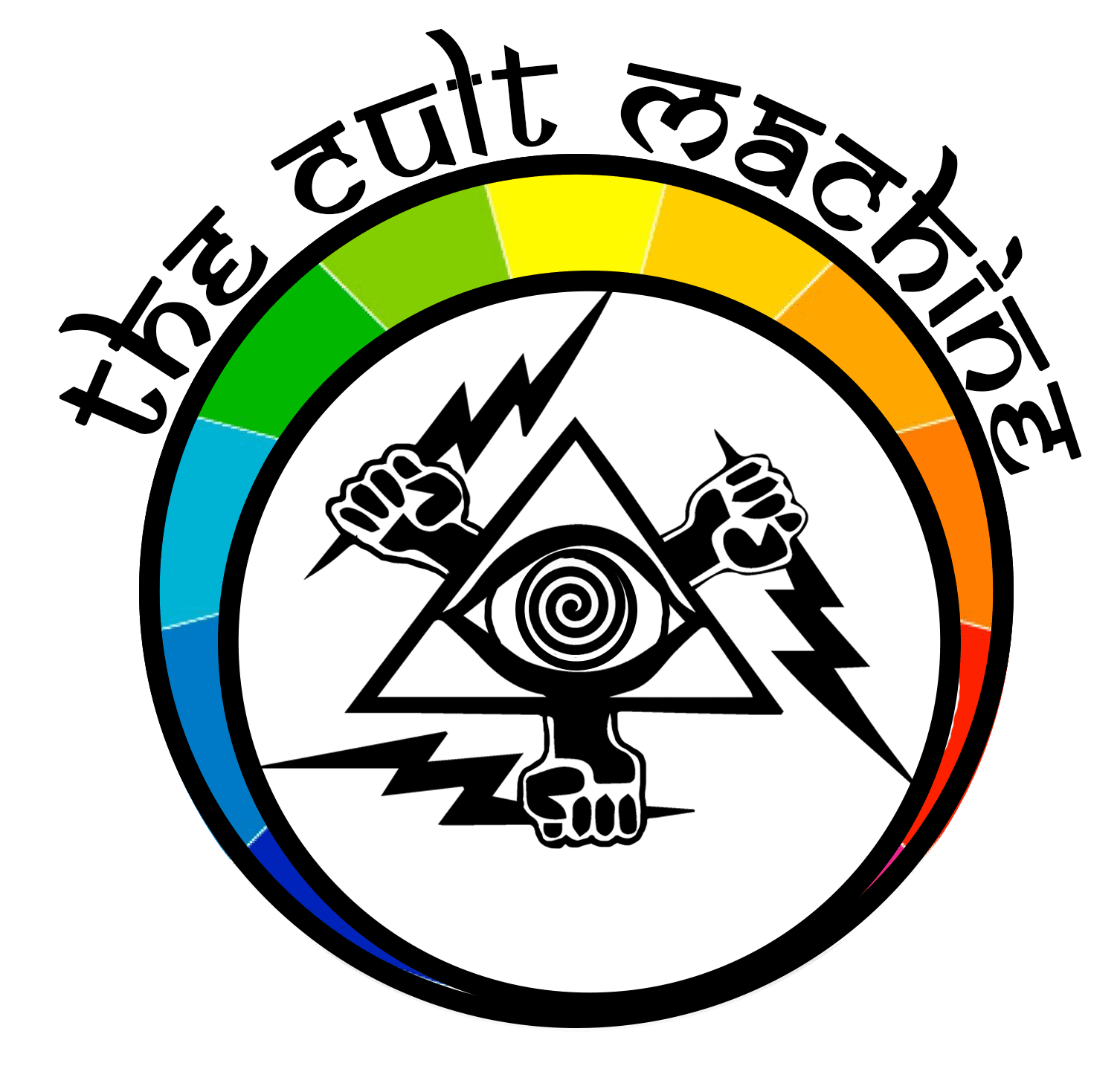Have you ever been mesmerized by the beauty and cooling light of a Full Moon in the sky? What factors are at work to entice you in? Are you aware of the effects of the moon on your physiology, energetic body, and psyche if you dig a bit deeper?
When the sun and moon are in opposition to each other, the earth is gravitationally influenced by the Full Moon. It affects the tides of the ocean with its pull, symbolizing completion and fulfillment. It also encourages you to think about your blessings and express gratitude for them.
The moon is described as “full” when it reflects light from the sun. It symbolizes an abundance of acquired goodness, increased vitality, receptivity, and strength, but this fullness can also appear as an outpouring of emotions, unpredictable behavior, and heated arguments, bringing physical and emotional strain with it.
This article honors the Full Moon by providing activities for aligning with its energy, strengthening your connection to the lunar cycle, releasing tension, and restoring yourself, leaving you feeling grounded, revitalized, and fulfilled.
The Moon and Yoga

Every yang trait has a yin complement, according to Hatha yoga. Masculine energy has a feminine polarity, with shakti female energy (connected with love, compassion, and creativity) dominated by the Moon and shiva male energy ruled by the Sun.
BKS Iyengar explained in his book The Tree of Yoga, “Ha means sun, which is the sun of your body, that is to say your soul, and tha means moon, which is your consciousness. The energy of the sun never fades, whereas the moon fades every month and again from fading comes to fullness.”
Hatha yoga seeks to establish a balance of sun and moon energies, as well as activity and receptivity. This is why traditional yogis see sunrise (sun salutations) and sunset (moon salutations) as favorable times to practice yoga. The Full Moon’s energy is linked to the force of prana, which is felt as fullness, upward-moving energy, and expansiveness at the end of an inhalation. While you may feel energetically exalted, you may also have heightened emotions without a feeling of grounding.
A Yogi’s Full Moon Practices
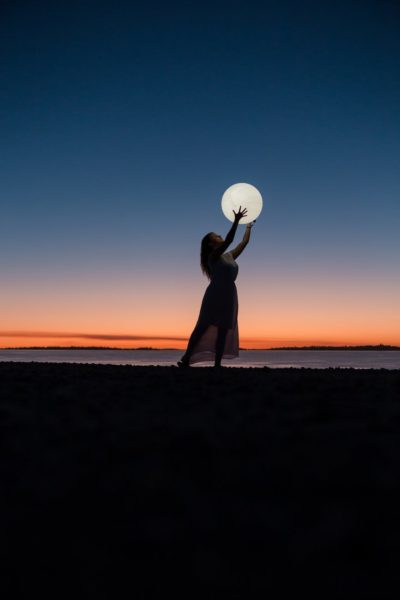
Reduce the Amount of Fat in your Diet
Because the Full Moon is associated with heaviness and sluggishness, you may choose to eat lighter, nurturing, readily digested, and freshly cooked sattvic (prana-rich) meals to counteract the heaviness and coolness. During this time, nourishing kitchari, a light and easy Ayurvedic dish made with rice and mung beans with fresh seasonal vegetables and spices, is a good choice.
Be Grateful
Gratitude is a graceful recognition of all that nourishes us, a bow to our blessings, big and small, and an appreciation of the small moments of good fortune that maintain our lives every day. Gratitude’s impact on mental and physical health has been studied in a rising number of scientific research. They discovered that practicing thankfulness improves your mood, fosters empathy, and increases happiness. It can also improve your relationships, reduce depression, and improve your heart health.
What To Do:
This easy technique can be used as a formal seated meditation with your eyes closed or as a relaxing journaling exercise.
- Set a timer for ten or fifteen minutes.
- Sit comfortably and begin to think about, visualize, and feel grateful for the people and things in your life. It could be your family and their affection, your friends and their support, your devoted pets, your prosperous life, the gorgeous nature surrounding you, or the country you live in.
- Be grateful for your senses of smell, hearing, and taste, which have been given to you as a gift of life.
- Thank your body for the way it works, for the insight you possess, and for the love you emit.
- Recognize how much you have to be grateful for and feel gratitude in your heart. After you’ve finished your practice, sit quietly for a few moments with your eyes closed, thinking about how you feel.
Practice Chandra Bhedana Pranayama (Left-Nostril Breathing)
The left nostril corresponds to the ida nadi in yoga philosophy. Cooling lunar (chandra) energy is related to this energy channel. The parasympathetic nerve system (rest and digest response), the left side of the body, and the right hemisphere of the brain, which focuses on intuition and creativity, have all been related to the Chandra nadi. Inhaling through the left nostril and expelling through the right nostril is Chandra bhedana pranayama.
22 hypertension patients participated in a pilot study at the Advanced Centre for Yoga Therapy Education and Research (ACYTER), where they practiced 27 rounds of Left-Nostril Breathing. The study found that the patients saw an immediate decrease in a variety of cardiovascular measures, including a decrease in heart rate as well as systolic and pulse pressure, indicating that it is beneficial in the treatment of hypertension.
How to Do it:
- Sit in a chair with your feet flat on the floor or on a cushion with your legs crossed in a comfortable position. Maintain a relaxed face and shoulders, as well as a straight spine.
- Fold your index and middle fingers into the base of your right thumb while keeping your thumb, ring, and little fingers extended in the vishnu mudra. Your thumb should be lightly placed over your right nostril, and your ring and little fingers should be lightly placed over your left nostril.
- Slowly inhale through your left nostril while closing your right nose with your thumb.
- Then, using your ring and little fingers, seal your left nostril and exhale through your right nose.
- Close the right nostril and inhale through the left and exhale through the right for another 10 cycles, gradually increasing your practice to 27 rounds with time.
- All inhalations should be done through the left nostril, and all exhalations should be done through the right.
Yoga to Celebrate the Full Moon
This salutation will re-energize you and provide an alternative to heating as well as exciting sun salutations.
Moon salutations are calming and relaxing. On Full Moon days, as well as any time you feel fatigued, overwhelmed, overstimulated, or overheated, incorporate them into your evening practice.
Step-By-Step Instructions
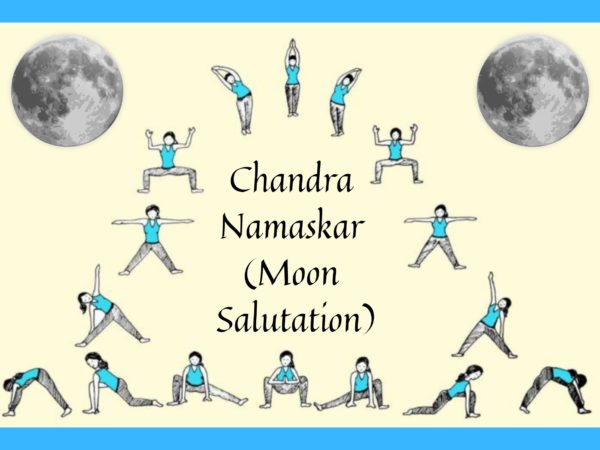
- Stand in Tadasana / Mountain Pose.
- Inhale, move into Upward Salute (Urdhva Hastasana), extending arms outwards and upwards, interlace fingers and point index fingers skywards.
- Exhale, bend to the right, extending your left side from outer left foot to the tips of index fingers. To protect your lower back, bring your lower belly button in and up.
- Exhale, bend to the left.
- Inhale, return to the center.
- Exhale, step your feet apart, toes pointing slightly out in Goddess Pose. Squat softly, keeping knees in line with ankles and back straight. Arms bent at a 90-degree angle at the elbows, fingers in Anjali mudra (thumb and forefinger touching).
- Inhale, turn both feet to the right, arms outstretched and parallel to the floor in Trikonasana / Triangle Pose.
- Exhale, extend left arm over the right leg. Reach left arm to the heavens and lower the right hand to the ankle or shin. Inhale and rotate your chest to the sky.
- Exhale, bring left arm down to frame right foot with right hand, spin your back foot even more, and bend your hips forward to fold over right (straight) leg into Parsvottonasana / Pyramid Pose.
- Inhale, step left foot back, bend right knee into a high lunge stance. Push the left thigh up and back, keeping the knee in line with the ankle.
- Exhale, put both hands to the floor to the big toe side of right foot in Skandasana / Wide Legged Squat Over Right Leg. Rotate your body to the front of the mat by turning inwards on the ball of your right foot. Toes point to the ceiling on the outstretched left leg. Bring hands together in Anjuli Mudra or keep hands on the floor.
- Inhale and return Goddess pose, in prayer.
- Exhale. knees in line with ankles, back straight, and chest open.
We now switch our attention to the left leg and rewind the poses we’ve already completed.
- Wide-legged squat over left leg (Skandasana).
- Lunge over left foot, stride back with right leg, both hands framing left foot.
- Exhale. Take a few steps in with your right foot, straighten your left leg, level your hips. Then fold over your left leg into Parsvottonasana.
- Inhale, right foot readjusts, right arm extends upwards, and rotate your chest to the sky in Trikonasana/Triangle Pose. Exhale.
- Inhale and step your feet wide apart, toes pointing slightly out. Inhale, bend your knees, and squat into Goddess pose.
- Upward Salute (Urdhva Hastasana): Inhale, step back into the pose, arms up towards the sky, hands clasped, index fingers extending.
Finally, in Standing Crescent pose, we repeat the whole procedure above, but this time bending to the left.
To Conclude…
The Moon Salutation sequence focuses mostly on the lower body. This makes it ideal for those who prefer not to bear weight on their arms. There are numerous physical advantages of practicing yoga. The sequence also promotes the suppleness of the respiratory, circulatory, and digestive systems, as well as their functioning and equilibrium.
